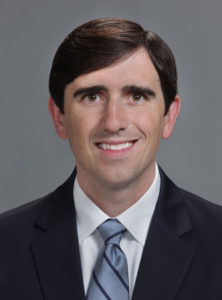Arthroscopic Revision Rotator Cuff Surgeon

Are you an athlete who participates in repetitive overhead motions and have had prior rotator cuff surgery? If so, you may be at risk of re injuring your rotator cuff. Arthroscopic revision rotator cuff surgeon, Dr. Robert Boykin provides diagnosis and both surgical and nonsurgical treatment options for patients in Asheville who are experiencing problems withe their rotator cuff. Contact Dr. Boykin’s team today!
Anatomy of a Rotator Cuff
The rotator cuff is a series of four muscles that surround the shoulder (supraspinatus, infraspinatus, subscapularis, and teres minor). These muscles are responsible for centering the ball in the socket of the shoulder and providing the strength to move the arm and participate in overhead activities. Specifically, the rotator cuff provides force for movement of the arm in forward flexion, abduction, internal rotation, and external rotation. The muscles originate from the scapula (shoulder blade) and insert on the humerus bone of the upper arm.
As the muscles get closer to their insertion on the humerus, they are called tendons. These tendons may be damaged from a traumatic event, micro-damage from overuse and impingement (pinching of the tendon against the acromion process of the scapula), or from chronic degenerative changes of the tendon. Injury to the rotator cuff may involve one or more tendons. The spectrum of disease ranges from tendonitis (inflammation of the tendon) to partial tears to full thickness tears (complete detachment).
What is Rotator Cuff Repair Surgery?
Many cases of rotator cuff tears require surgical treatment to attempt to alleviate pain and restore function and strength to the shoulder. These may be performed with an arthroscopic or mini-open approach. In some circumstances a patient may have a re-tear of the rotator cuff after a previous repair. This may be due to an injury (such as a fall on the shoulder or returning to activities too quickly after surgery), a failure of the tendon to heal back to the bone after the initial surgery, or a chronic process of overuse that causes recurrent degeneration of the tendon. In these cases, a revision rotator cuff repair is typically required to provide the patient with an optimal outcome. A revision repair is a more difficult procedure due to the complexity of dealing with a tendon that has now torn multiple times and the fact that a repair has already been completed previously. Shoulder surgeon, Dr. Boykin is highly trained and experienced in treating failed rotator cuff repairs for patients in Asheville, Arden, Fletcher and surrounding North Carolina communities.
Revision Rotator Cuff Repair Surgery
In most cases, Dr. Boykin will perform the revision rotator cuff repairs arthroscopically with small incisions, a camera, and tiny instruments. In certain cases it may be necessary to make a mini-open incision to adequately visualize and repair the tendon. During surgery every effort possible is made to identify the healthy tendon and reattach this to the native footprint (original site of attachment). In specific situations, adjuncts may be used to assist in healing such as a marrow stimulation healing response technique, platelet rich plasma, or patches. The type of retear will dictate the exact configuration of the repair needed.
Although rare, certain large retears, especially those that tear at the junction of the muscle and tendon, may not be able to be fully repaired. These are treated with partial repair, augmentation, or debridement. In addition, certain large tears that have retracted may put pressure on the suprascapular nerve causing pain and changes in the muscle. In these cases the traction on the nerve is released through an arthroscopic suprascapular nerve release. In most patients, revision repairs are effective in relieving pain and restoring function; however, the success rate is not as high as that of a primary rotator cuff repair.
Recovery Following a Revision Rotator Cuff Repair
After revision surgery patients are placed into a sling and an individualized physical therapy program is started. The specific progression of therapy will depend on the configuration of the tear, type of repair, and number of tendons involved. In cases of revision the progression of therapy may be slower than that involving a primary repair. It typically consists of passive range of motion followed by active motion, strengthening, and eventually return to activities. The sling is worn for 6-8 weeks post-operatively.
For additional information on rotator cuff repair or revision rotator cuff repair, or for additional resources on shoulder injuries, please contact the office of Dr. Robert Boykin, orthopedic shoulder surgeon serving Asheville, Arden, Fletcher and surrounding North Carolina communities.
